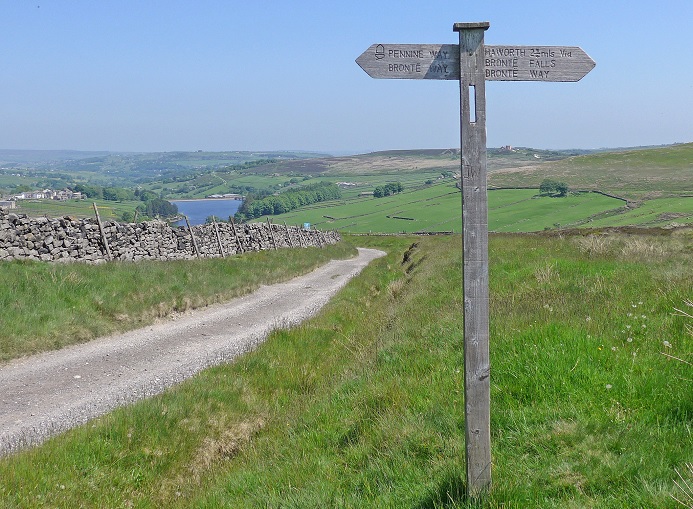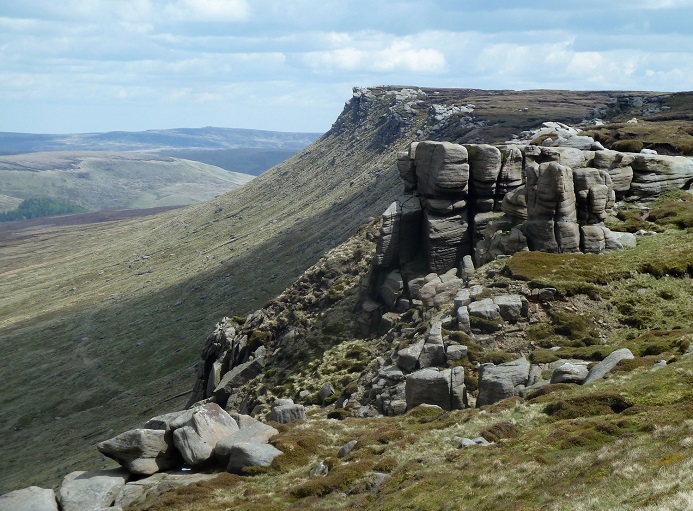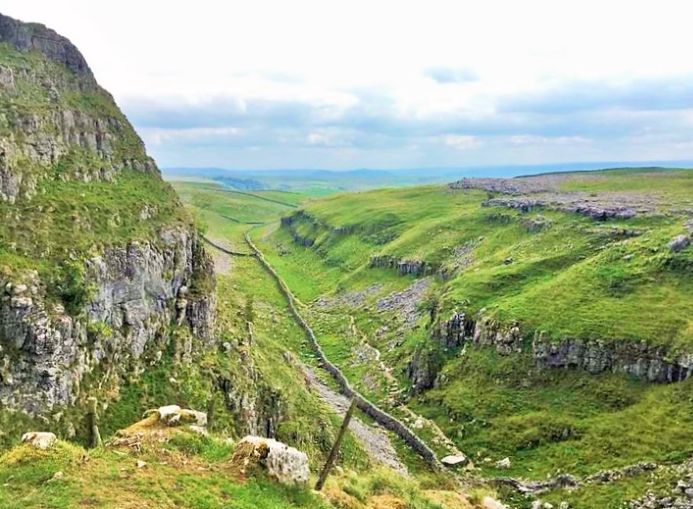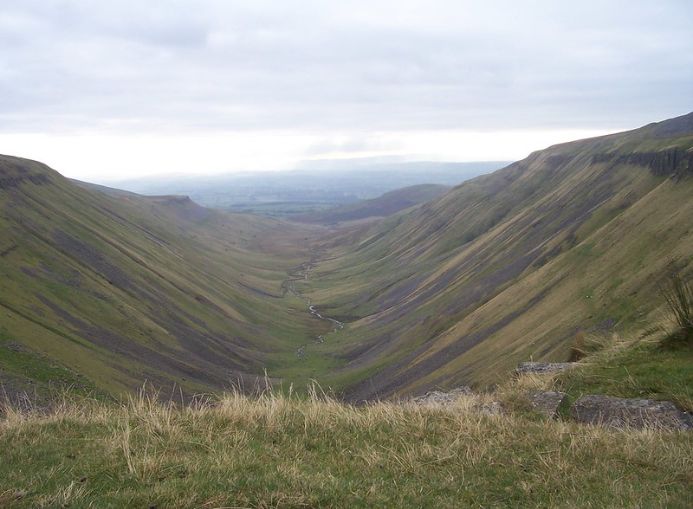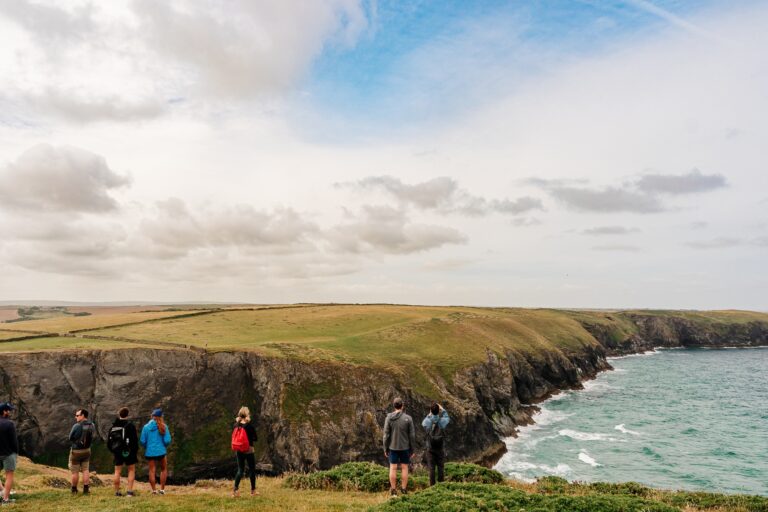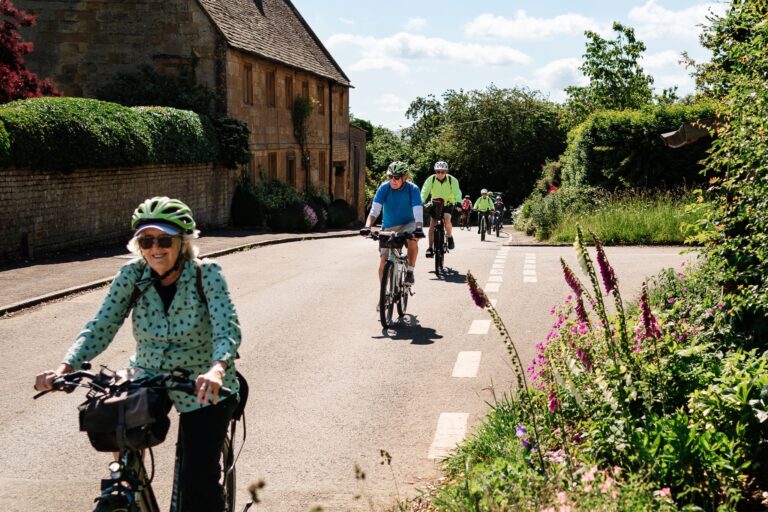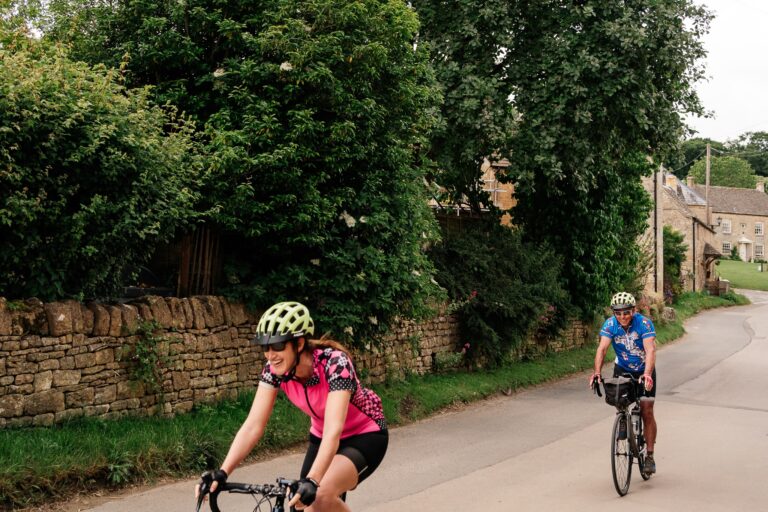Updated: January 18, 2024
Destination: The North
Share
A Guide to Walking the Pennine Way
The Pennine Way is one of the UK’s most beautiful walking routes. Stretching for well over 200 miles, it follows the spine of England and traverses three national parks.
With a combined ascent that exceeds that of climbing Mount Everest, it’s definitely one of the more challenging walking routes in England.
With a variety of trails, crossing peaks, rolling hills, forests, and open fields, the Pennine Way is often absolutely spectacular and even features a smattering of cultural sites along the way.
Where is the Pennine Way?
The Pennine Way is a walking route, which follows the central peaks of England, including the hills of the Peak District, the Yorkshire Dales, Swaledale Valley, the North Pennines, Hadrian’s Wall, and the Cheviot Hills.
Where does the Pennine Way start and finish?
The Pennine Way starts in Edale, in the Peak District, and ends at Kirk Yetholm, in the Borders, just inside Scotland.
How long is the Pennine Way?
The Pennine Way is 268 miles (431 km) long.
How fit do you need to be to walk the Pennine Way?
The Pennine Way is classed as a difficult walk, due to how long and hilly it is. Over 268 miles, you will climb a total of 32,000 ft (9,754m).
That said, this isn’t a route to tackle in one day. In fact, most people break up the route into 10-20 miles a day and take rest days in neighbouring towns and villages.
How long does it take to walk the Pennine Way?
Most walkers complete the route in 15 to 20 days, depending on how many rest days they want to take, and how many miles they choose to do each day.
How well sign-posted is the Pennine Way?
As a National Trail route, the Pennine Way is well sign-posted, following tracks led by an acorn symbol or post saying ‘Pennine Way’. They do sometimes go missing, though, or can be hard to see, so we recommend taking a map with you or downloading a GPS route if you can.
When’s the best time to walk the Pennine Way?
The best time to walk the Pennine Way is from May to September. You could still walk it in April or October, just keep an eye on the North Pennine sections, as there’s sometimes heavy snow. And as with any UK outing, pack waterproofs!
Is there accommodation along the route?
There are a few hostels and the odd cafe and pub, but the route is very remote.
Most people camp for the majority of nights or detour slightly off-route to find accommodation. You’ll need to make sure you stock up with food and water well each day.
What is the hardest part of the Pennine Way?
The hardest point of the Pennine Way is the stretch between Dufton and Alson (20 miles), where you climb the tallest peak, Cross Fell at 893m. But the views are worth it and there’s a long downhill after.
What’s the most beautiful part of the Pennine Way?
Between Middleton-in-Teesdale and Dufton (a 21-mile section of the Pennine Way), is the most beautiful part of the walk.
There are three magical waterfalls along this section, and the climb to the top of High Cup offers the best views of Pennine Way.
What are the best stages to walk the Pennine Way?
This route takes approximately 16 days, covering anything between 12 and 23 miles a day, but you can add extra days if need be, or even walk a little further on others if you wish.
Day 1: Edale to Crowden – 16 miles (26 km)
A long ascent to Kinder Plateau kicks off the first day (the second longest of the whole Pennine Way walk). But believe us, it’s worth the climb, with panoramic views on a clear day.
Crowden doesn’t have many facilities, apart from a hostel and a campsite, so make sure you stock up at Edale.
Day 2: Crowden to Standedge – 11 miles (18 km)
This leg isn’t as demanding as the first day, giving tired legs a slight break. Enjoy rambling over moorland and along the many Pennine reservoirs.
Again, there are few snack options in Standedge, but you could detour via Diggle or Uppermill. A great place to stay is Saddleworth Holiday Cottages.
Day 3: Standedge to Calder Valley – 11 miles (18 km)
There’s plenty of flat walking in this section, following the high moors and reservoirs. You’ll cross over the M62 motorway, but there’s a footbridge for pedestrians.
There are a few snack options en route, as well as places to stay, although you may need to take a slight detour.
Day 4: Calder Valley to Ickornshaw – 16 miles (26 km)
Another beautiful day’s walk and not too demanding, apart from a bit of a steep climb out of Calder Valley. Enjoy wandering through the pastures and along the moors, although keep an eye on the signs as it’s easy to get lost in these twisty sections.
This route has quite a few places to eat and stock up, and Haworth (a little off-route) offers more accommodation options than Ickornshaw.
Day 5: Ickornshaw to Malham – 17 miles (27 km)
Enjoy more rolling pastures and some riverside walking, as well as a few climbs (and great views), from Pinhaw Beacon and Scaleber Hill.
The Way passes through a number of interesting villages, so there are plenty of cafes and facilities along the route.
Day 6: Malham to Horton-in-Ribblesdale – 14.5 miles (23 km)
This is a challenging but beautiful day. Soak up the majestic Malham Cove and Malam Tarn before your two steep climbs, Fountains Fell (668m) and Pen-y-Ghent (694m). We recommend packing lots of snacks.
Day 7: Horton-in-Ribblesdale to Hawes – 14 miles (23km)
An undulating but not too demanding route, over the Dales, along the old Roman Road, and into Hawes. In the market town of Hawes you’ll find plenty of facilities and places to stay.
Day 8: Hawes to Tan Hill – 16.5 miles (27km)
One of the best days on the Pennine Way in terms of beauty. Pass waterfalls, climb moors, and enjoy views that stretch so far you feel as if you can see all of England.
Day 9: Tan Hill to Middleton-in-Teesdale – 17 miles (27km)
Today marks the halfway point of the Pennine Way. If it has been wet, expect some soggy moorland, but this soon shall pass and you’ll see beautiful countryside coming down into Teesdale.
Day 10: Middleton-in-Teesdale to Dufton – 21 miles (34km)
If you thought day eight was your favourite walk, this one may just top it. The Way is generous today with three waterfalls, as well as High Cup, which may just offer the best sight of the Pennine Way.
It’s quite a flat day, through meadows and fields. If you want to reduce today’s walk, you can stop in Forest-in-Teesdale or Langdon Beck, which are both short detours.
Day 11: Dufton to Alston – 20 miles (32 km)
For many, this is the hardest day of the Pennine Way, as today you climb Cross Fell (893m) – the highest point on the Pennine Way. The views are worth it and there’s a nice big downhill, too. There are a few smaller climbs before you reach this peak though, so make sure you pack a lot of snacks today.
If you want to stop for rest or food en route, look out for Greg’s Hut.
Day 12: Alston to Greenhead – 16.5 miles (26 km)
This isn’t the most picturesque of days, as it’s quite flat, with lots of fields and gravel tracks.
However, today does end at Hadrian’s Wall, an iconic landmark, which you’ll follow on Day 13.
Day 13: Greenhead to Bellingham – 22 miles (35 km)
There are a lot of ups and downs on today’s walk, as you follow Hadrian’s Wall for 8 miles. But the route is full of stunning views as you walk in the footsteps of the Roman soldiers.
The day ends with a slightly less invigorating road walk, which takes you to Bellingham.
If you’re in need of a proper rest and facilities, you’ll need to make a detour to Once Brewed, where you could stop for the night and then continue to Bellingham the following day. Otherwise, there are a few friendly farms along the way and some supplies available in Bellingham.
Day 14: Bellingham to Byrness – 15 miles (24 km)
Today you make your way to the Cheviots. The majority of the walk takes you through heathery moor (in its prime in September), and through enclosed forests.
Make sure you pack lots of food today, as it’s the last place to buy supplies before you reach Kirk Yetholm.
Day 15: Byrness to Windy Gyle – 14 miles (22 km)
The penultimate day. The route begins with a walk through the forest and onto the ridge of the Cheviots. The day’s high point is Windy Gyle (619m) before descending to flatter land again. It can be quite exposed in areas; and be aware, it’s also a military training area (blank firing only).
Some people combine days 15 and 16 together, as they make a dash to get to the end, where good food, a shower, and a comfortable bed awaits. It’s up to you but again, there are little, if no, facilities in Windy Gyle.
Day 16: Windy Gyle to Kirk Yetholm – 13 miles (21 km)
Just a few more hills stand between you and the end of the Pennine Way.
A little like yesterday, with rolling hills, a few bogs and fields. There’s a long descent at the end as you come into Kirk Yetholm – note there are two ways down, the higher or lower paths.
Hopefully, you’ve booked yourself a nice stay at one of the B&Bs such as Mill House, Blunty Mill or The Plough Hotel.
Put your feet up and celebrate – you’ve just walked the Pennine Way!
Planning a walking holiday in the North of England? Check out our guided tours of Northumberland and Hadrian’s Wall.
Signature Tours
Subscribe to our Newsletter
Find out more about our latest tours, destinations, activities and stories.
You can unsubscribe at any time using the link in our emails. For more details, review our Privacy Policy.
